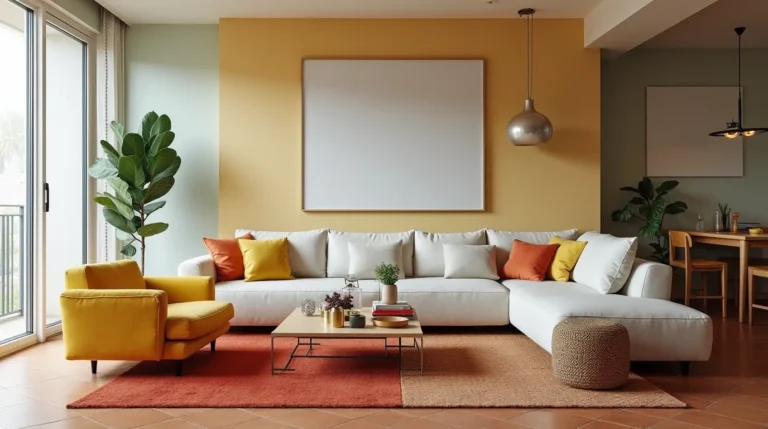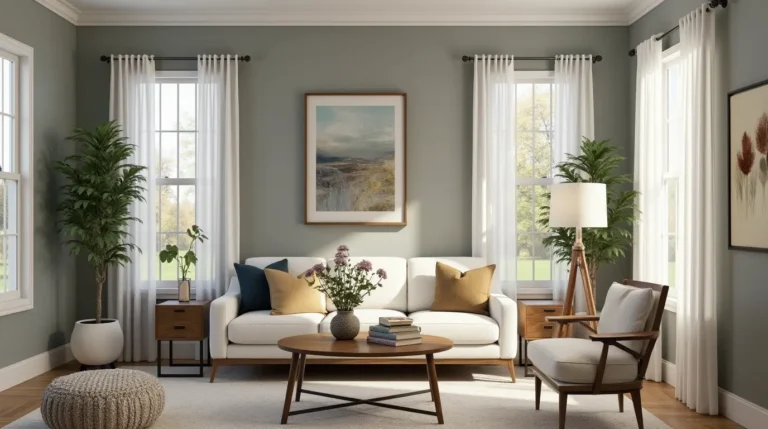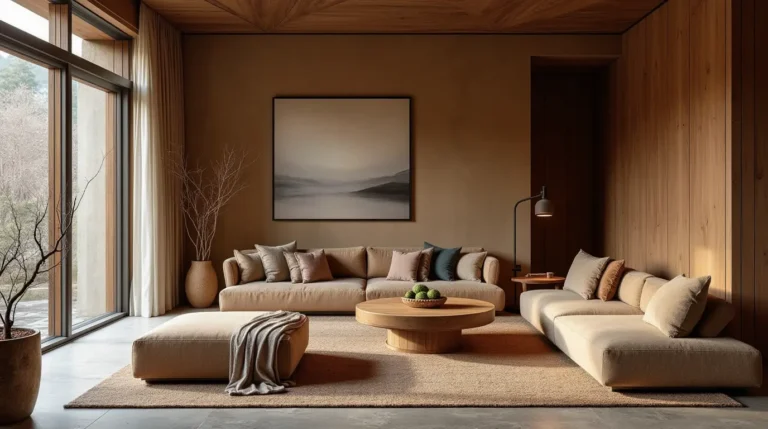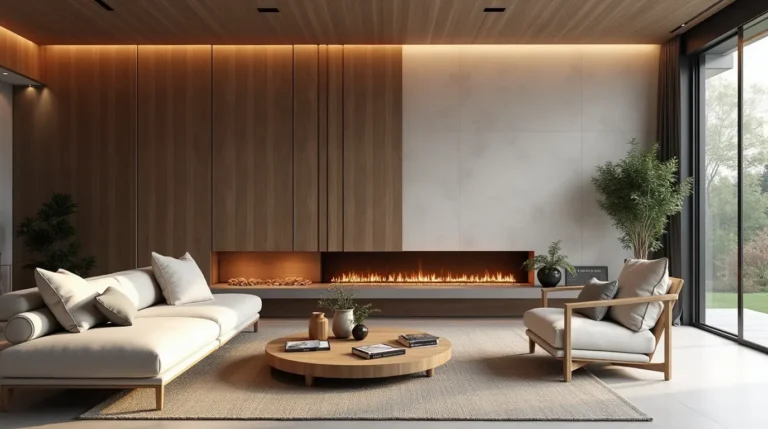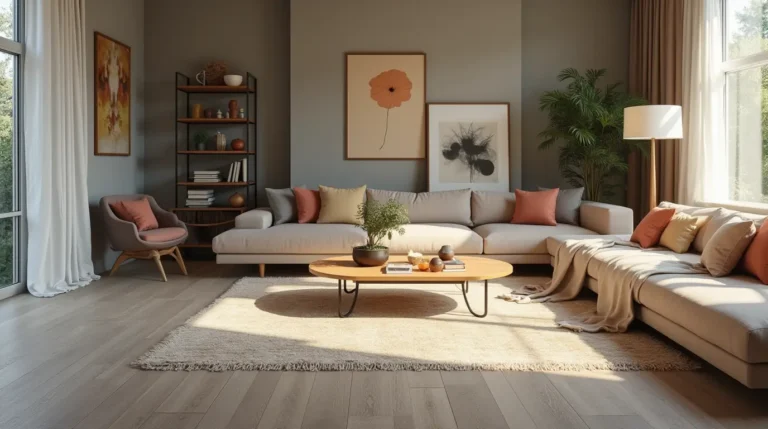How to Arrange Furniture in Any Living Room: 8 Layout Ideas That Work
Share the love
Creating a comfortable living room layout that has a balance of function and visual appeal can be like piecing together an intricate puzzle. You will need to find a suitable place to perfectly place your own seating arrangement, developing clear zones for movement, and finding a smart layout that’s tailored to your life style, such as hosting a friend or watching a movie! Incorporate difficulties such as little square footage, open-plan designs, or strange architectural elements like alcoves or bay windows, and arranging furniture becomes a complex challenge, one that is so much more than just placing a sofa against the wall.
Whether your living room is compact or sprawling, open-plan or oddly shaped, this guide offers eight clever layout ideas — complete with practical tips — to help you unlock your room’s full potential.

1. Small Living Room Layout
Challenge: In cramped spaces, the arrangement of furniture often feels set in stone, giving little room for creativity.
Solution: Maximize every inch by choosing dual-purpose pieces. Swap out bulky coffee tables for stylish footstools that double as both table and footrest. Let the light into the room! Wall mounted storage intervals create storage without taking up floor space, and free up space for air flow as well. Mounting the TV onto the wall, as opposed to using a stand, opens up the room visually . Add texture and life with a few well-placed plants or a botanical wallpaper feature wall.
Design Tip: Furniture with hidden storage — like ottoman sofas or benches — keeps clutter tucked away. Paint trims and woodwork with a subtle sheen to reflect light, and if possible, replace doors with archways to open up flow between rooms.
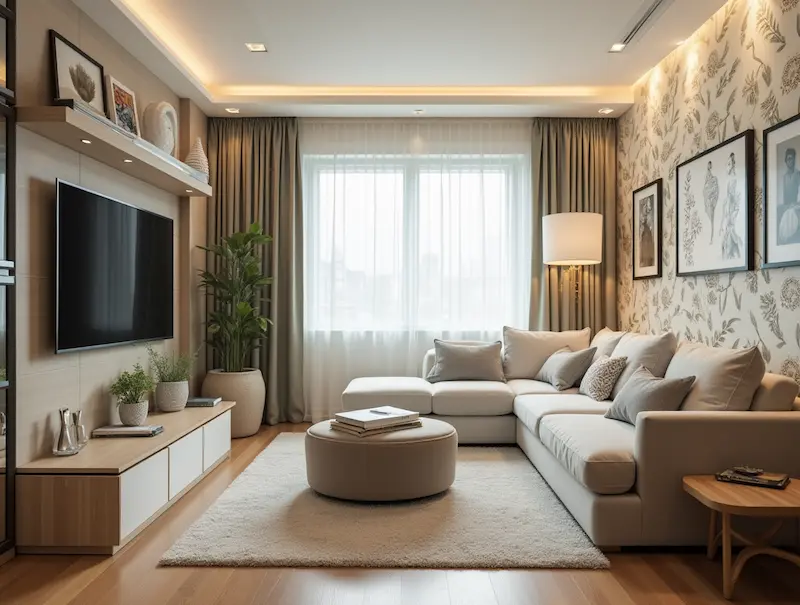
2. A Sociable Setting for Entertaining
Challenge: The natural instinct is to arrange everything around the TV, but that doesn’t foster great conversation.
Solution: Create a more sociable environment by turning seating inward. Select an anchor piece, such as a statement rug, stylish coffe table, or upholstered ottoman. Accompany it with sofas and accent chairs to foster conversation. Keep drinks within reach by placing side tables beside every seat.
Design Tip: A large area rug helps define the social zone and anchors the furniture. Wall-mount your TV opposite the comfiest sofa to balance entertainment and conversation without compromising flow.
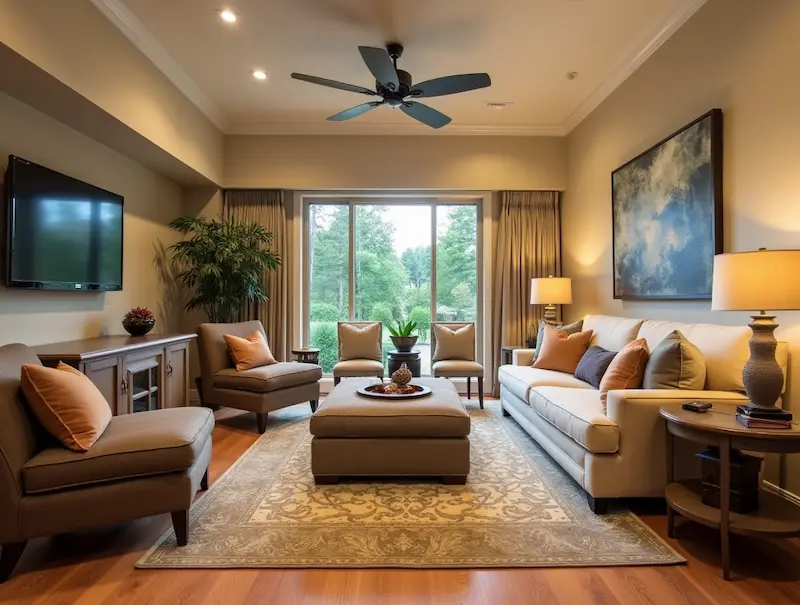
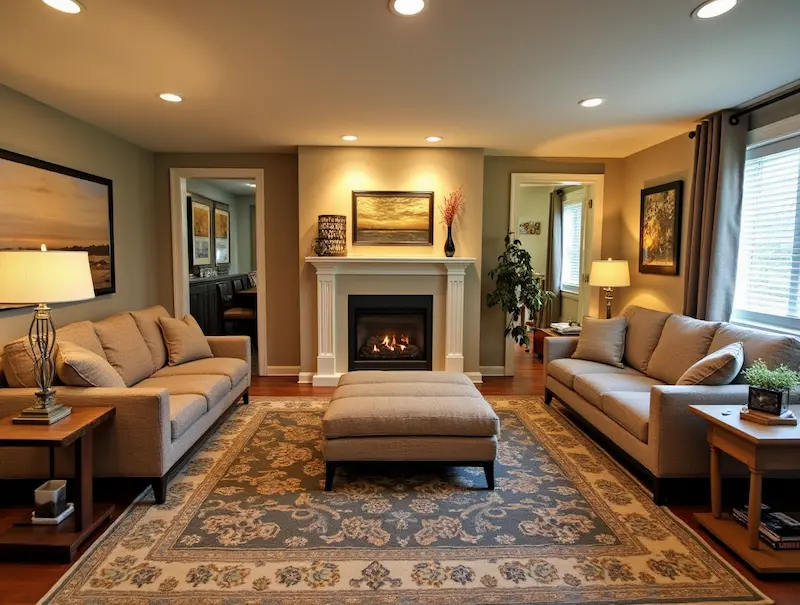
3. Making Use of Alcoves
Challenge: Recessed areas often go underutilized or become clutter zones.
Solution: Consider alcoves as smart built-in storage or design a floating desk with shelves for a compact home office. Amix of open shelving and closed cupboards makes for a functional and visually interesting design.
Pro Tip: If executed properly, there will be nothing awkward about your shelves extending to your ceiling . If you have symmetrical alcoves beside a fireplace, give each its own purpose instead of mirroring them exactly.
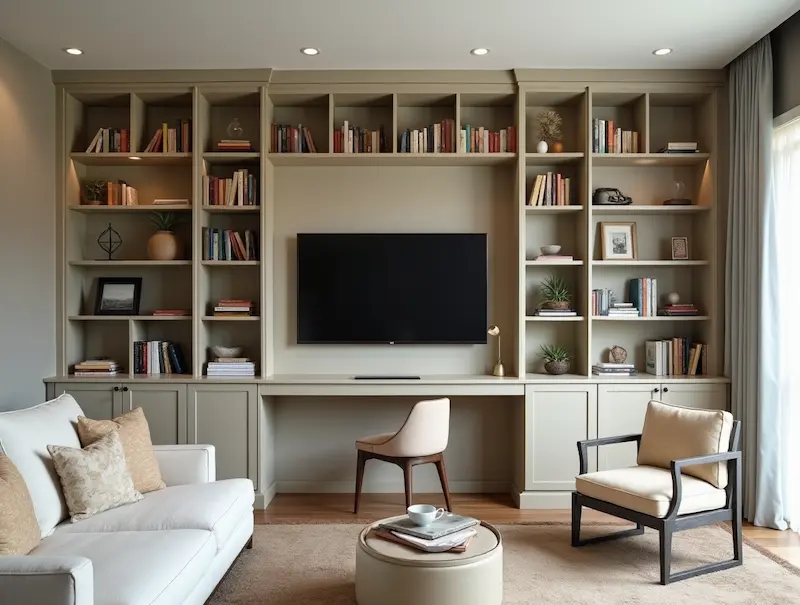
4. Dealing with Bay Windows
Challenge: Bay windows are gorgeous, but their shape makes furniture placement difficult.
Answer: Don’t be scared to put your sofa in front of the window – instead use the hidden space behind it for storage (like a trunk or slim console). You can also showcase the bay by putting two accent chairs on either side and having a small table in between them for a lovely conversation nook.
Design Tip: Accent chairs in a bay area add elegance and function without blocking light. If placing a sofa in front, use layered lighting (e.g., a lamp on the sideboard behind) to make it intentional.
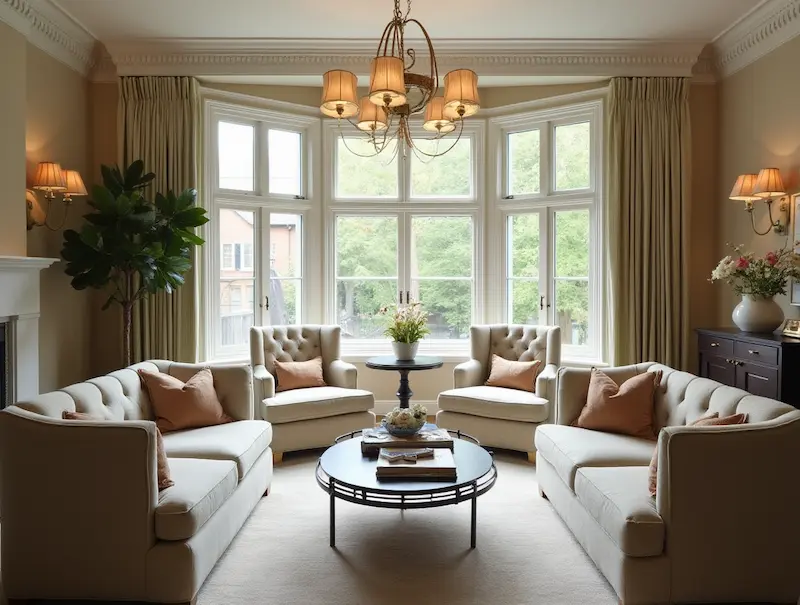
5. Extra-Large Living Rooms
Challenge: Big rooms can feel cold and undefined without structure.
Solution: Divide the space into purposeful zones — a reading nook, a game area, or a conversation space. Avoid pushing furniture against the walls. Break up the large spaces in the room by placing sofas or armchairs in the middle to make the area feel cozier.
Design Tip: You don’t need tall room dividers. Use rugs, furniture groupings, or even lighting changes to subtly define areas without cutting off sightlines.

6. Long and Narrow Living Rooms
Challenge: These layouts often feel like a hallway — especially with furniture lining opposite walls.
Solution: Break the corridor effect by using L-shaped seating (like a corner sofa or a sofa + chair combo). Use a long console or low sideboard along one wall instead of more seating. To improve the sense of space within the room, keep the furniture low profile and more streamlined.
Design Tip: While it sounds ironic, a big sectional could actually define the area while also reducing the need for more distracting furniture.

7. Wide Living Rooms
Challenge: Like long rooms, wide spaces can feel directionless if the layout isn’t carefully considered.
Solution: Avoid the temptation to place a sofa flat against the longest wall. Instead, position your seating around a central point. This arrangement preserves traffic circulation and gives the impression that the room is deliberate and integrated.
Design Tip: Here’s where low profile furniture really shines, unfettering a sense of spaciousness without the claustrophobic feeling of overpowering the area. Focus on designing traffic patterns that flow around furnishings.
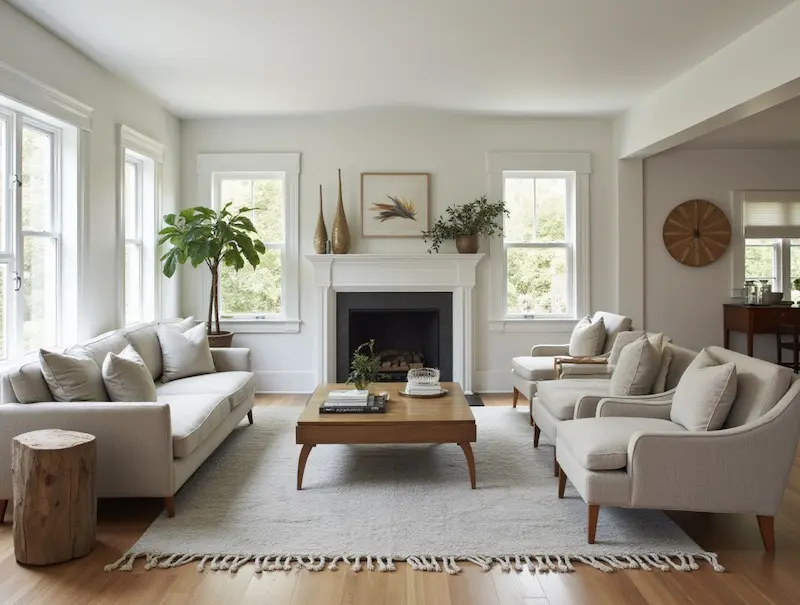
8.Open Plan Lounge and Kitchen
Challenge: Addressing various activities in one shared area needs careful zoning and space division.
Solution:Use your sofa as a natural divider between the living and kitchen zones . Rugs will be your behind-the-scenes helpers — a large area rug under your living room furniture gives the effect of your furniture group being a defined zone. Incorporate a bold rug beneath your dining table or a pendant light over your kitchen island to help differentiate your zones without a physical barrier.
Design Tip: Look for rugs with different textures or patterns when differentiating zones but stay consistent with your colors to bring it all together. The most economical zoning tool you have available is your sofa — use it for your gain.

conclusion
It doesn’t matter what the shape or size of your room is — if you consider the arrangement of your living room, it can change the overall feeling and functionality of your space completely. Whether you live in a tiny pocket-lot apartment in the city or have a large open-plan home, it’s all about balance — between comfort and flow, between design and practicality.
Utilize templates or apps, or just some judiciously placed painter’s tape on the floor, to visualize your space before moving a single piece of furniture. And remember: your living room should be functional for you — not the other way around.


